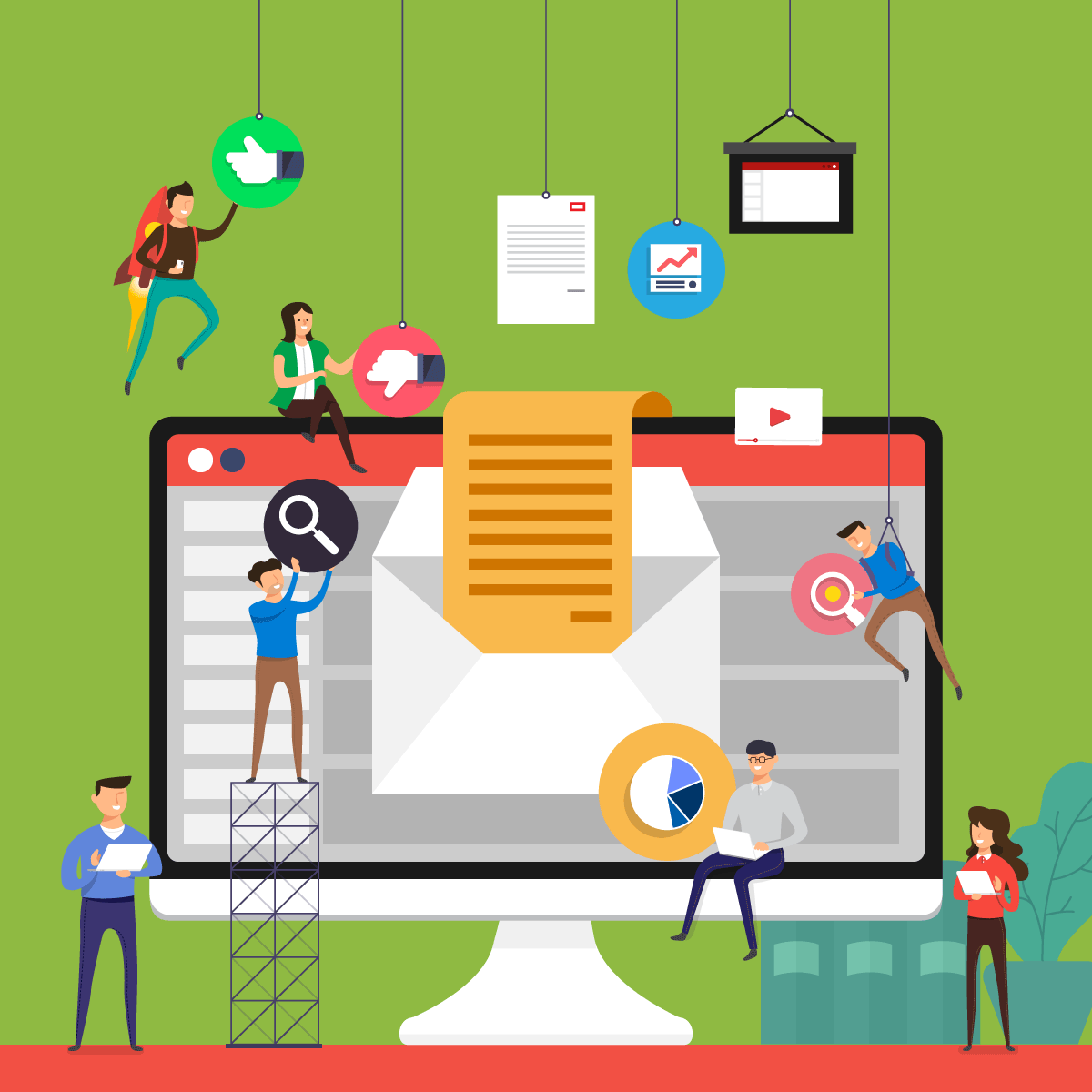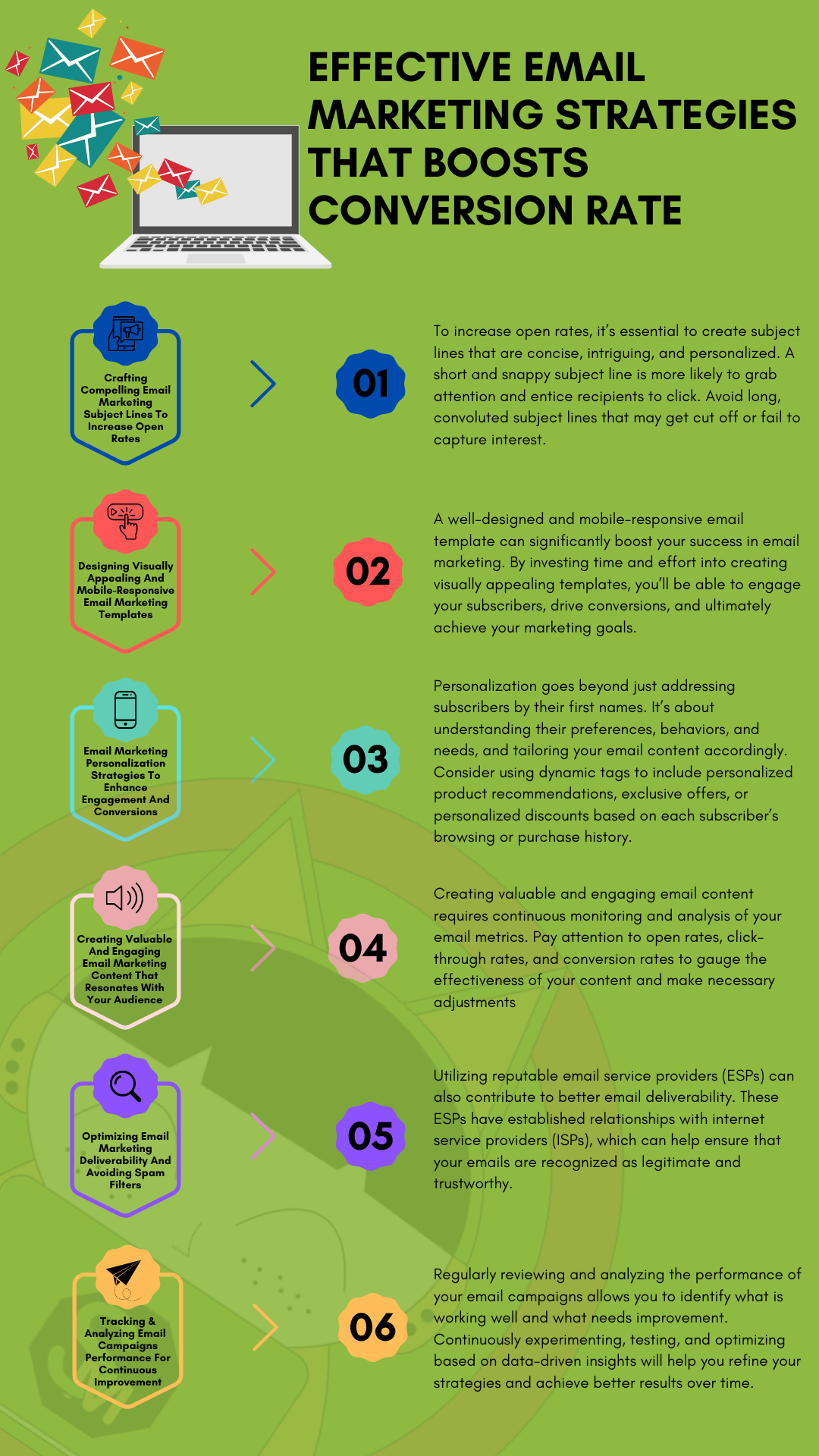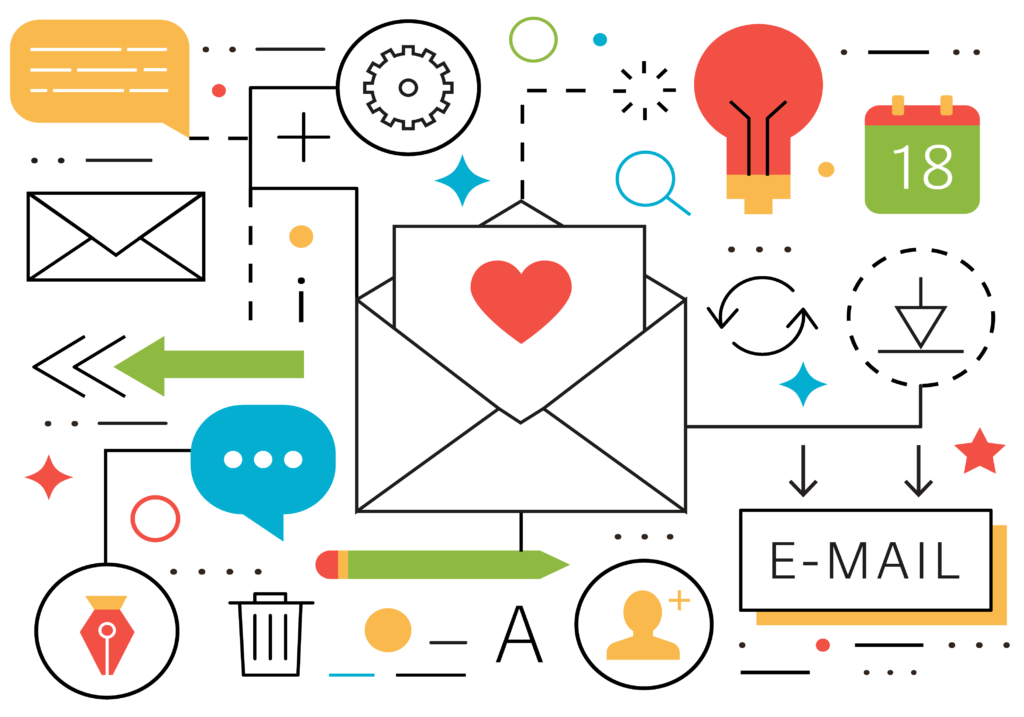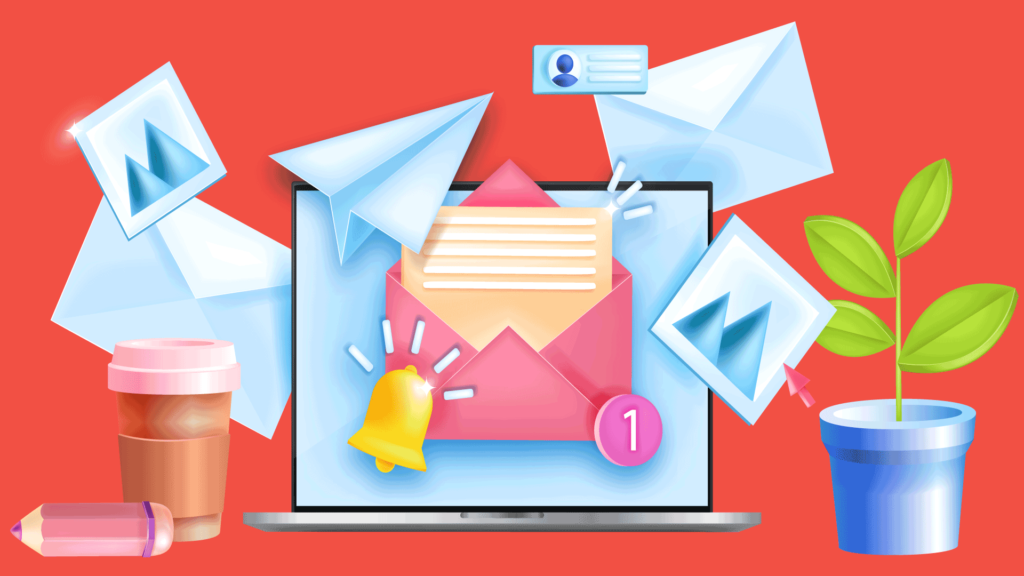
Email marketing is one of the most effective ways to reach your target audience and promote your business.
With more than 4 billion email users worldwide, it’s no wonder that businesses of all sizes are leveraging the power of email marketing to drive sales and build brand awareness. Yet, many businesses are still hesitant to invest in email marketing because they assume it’s too expensive or too complicated to manage.
Email marketing is not only affordable but also easy to manage. Let’s walk you through the essential skills you need to create effective email campaigns and introduce you to some of the best affordable tools to help you unleash the full power of email marketing.
WHY EMAIL MARKETING IS THE MOST POWER DIGITAL MARKETING PLATFORM?
In today’s digital landscape, where businesses are constantly vying for attention and trying to stand out from the crowd, email marketing has emerged as a powerful tool to engage with customers and drive business growth.
With the ability to deliver personalized messages directly to the inbox of your target audience, email marketing offers a unique opportunity to establish meaningful connections and build long-lasting relationships.
One of the key reasons why email marketing is so important is its unparalleled reach. According to recent statistics, there are over 4 billion email users worldwide, a number that is expected to grow in the coming years.
This means that by leveraging email marketing, you have the potential to reach a vast audience and drive your message directly to their fingertips.
Moreover, email marketing allows for precise targeting and segmentation, enabling you to tailor your messages to specific customer groups based on their preferences, behaviors, and interests. This level of personalization not only enhances the customer experience but also increases the chances of conversions and repeat purchases.
Another crucial aspect of email marketing is its cost-effectiveness. Compared to traditional marketing channels such as print advertising or direct mail, email marketing offers a high return on investment (ROI) and is considerably more affordable.
With minimal costs involved in creating and sending emails, businesses of all sizes can leverage this powerful tool without breaking the bank.
Furthermore, email marketing provides valuable insights and analytics that allow you to track the performance of your campaigns in real-time. By analyzing metrics such as open rates, click-through rates, and conversion rates, you can gain valuable insights into your audience’s preferences, optimize your campaigns, and continuously improve your marketing strategies.
Consumers are bombarded with an overwhelming amount of content, email marketing offers a direct and personalized way to engage with your target audience. Its wide reach, cost-effectiveness, and ability to deliver tailored messages make it an essential tool for businesses looking to boost their success and drive meaningful results.
AFFORDABLE EMAIL MARKETING TOOLS FOR SMALL BUSINESSES AND STARTUPS
When it comes to email marketing, small businesses, startups and digital marketing agencies often have limited budgets. However, that doesn’t mean they can’t leverage the power of this powerful marketing channel.
In fact, there are several affordable email marketing tools available that can help these businesses boost their success without breaking the bank.
One popular and cost-effective tool is Mailchimp. It offers a free plan that allows small businesses to send up to a certain number of emails each month to a limited number of subscribers. As your business grows, you can upgrade to their paid plans which provide additional features like automation, advanced analytics, and more.
Another affordable option is Sendinblue. This tool offers a free plan as well, with generous limits on the number of emails you can send per day and the number of subscribers you can have. It also provides features such as email templates, segmentation, and marketing automation to help small businesses create effective email campaigns.
For startups looking for a comprehensive email marketing solution, ConvertKit is worth considering. While it may have a higher price point compared to other tools, it offers advanced features like customizable landing pages, automation workflows, and integrations with other marketing tools. It also provides a user-friendly interface, making it easy for startups to manage their email marketing efforts.
Lastly, MailerLite is another affordable option that offers a free plan for businesses with up to a certain number of subscribers. With this tool, businesses can create professional-looking email campaigns, automate their email sequences, and track the performance of their campaigns through detailed analytics.
By utilizing these affordable email marketing tools, small businesses and startup email marketing agencies can effectively engage their audience, nurture leads, and drive conversions without draining their limited resources. It’s important to assess your business needs and choose the tool that aligns with your goals and budget to maximize the benefits of using templates for email marketing campaigns.
KEY FEATURES TO CONSIDER WHEN CHOOSING AN EMAIL MARKETING TOOL
When it comes to email marketing, choosing the right tool is crucial for your success. With so many options available in the market, it can be overwhelming to make a decision. However, by considering a few key features and digital marketing templates, you can narrow down your choices and find the perfect tool for your needs.
First and foremost, you should look for a tool that offers easy-to-use and intuitive email editors. This is essential as it allows you to create visually appealing and professional-looking emails without any coding or design skills.
Look for drag-and-drop functionality, customizable templates, and a wide range of design options to make your emails stand out.
Another important feature to consider is automation capabilities. A good email marketing tool should offer automation features that save you time and effort.
Look for features like autoresponders, drip campaigns, and triggered emails that allow you to send personalized messages based on user behavior or specific events.
Integration options are also worth considering. Ensure that the email marketing tool you choose integrates seamlessly with your existing systems, such as your customer relationship management (CRM) software or e-commerce platform. This will enable you to streamline your processes and have a unified view of your customer data.
Data analytics and reporting capabilities are essential for measuring the success of your email campaigns. Look for a tool that provides detailed insights into key metrics like open rates, click-through rates, and conversions.
This will help you make data-driven decisions and optimize your campaigns for better results.
Lastly, consider the scalability and pricing structure of the tool. As your business grows, you will need a tool that can accommodate your increasing email list size and offer flexible pricing options.
Look for tools that offer tiered pricing based on the number of subscribers or provide customizable plans to suit your specific needs and budget.
By considering these key features, you can choose an email marketing tool that empowers you to create engaging campaigns, automate processes, measure results, and ultimately boost your success in reaching and engaging with your target audience.
ESSENTIAL SKILLS TO MASTER FOR EFFECTIVE EMAIL MARKETING CAMPAIGNS
Mastering essential skills is crucial for running effective email marketing campaigns. Here are a few key skills that you should focus on to boost your success:
Copywriting
Crafting compelling and persuasive email content is essential to capture your audience’s attention and drive them to take action. Learn the art of writing attention-grabbing subject lines, engaging body copy, and clear call-to-actions.
A well-written email can make all the difference in grabbing your subscribers’ interest and driving conversions.
Segmentation
One size doesn’t fit all when it comes to email marketing. Segmenting your email list based on demographics, preferences, purchase history, or engagement levels allows you to send targeted and personalized content.
By tailoring your message to specific segments of your audience, you can deliver more relevant content that resonates with them, increasing open rates and click-through rates.
A/B Testing
Testing different elements of your emails, such as subject lines, calls-to-action, visuals, and overall design, can help you identify what resonates best with your audience.
Conducting A/B tests allows you to optimize your campaigns and make data-driven decisions to improve open rates, click-through rates, and ultimately, conversions.
Analytics and Metrics
Understanding the performance of your email campaigns is crucial for continuous improvement. Familiarize yourself with email marketing analytics tools to track metrics like open rates, click-through rates, conversion rates, and unsubscribe rates.
Analyzing these metrics provides insights into what’s working and what needs improvement, allowing you to refine your strategies accordingly.
Automation
Implementing email automation can save you time and effort while delivering timely and targeted messages. Learn how to set up automated workflows, such as welcome emails, abandoned cart reminders, or nurturing sequences.
Automation enables you to nurture leads, engage customers, and build strong relationships without manual intervention.
By mastering these essential skills, you’ll be equipped to create and execute successful email marketing campaigns that drive engagement, conversions, and ultimately, boost your overall success.

EFFECTIVE EMAIL MARKETING STRATEGIES THAT BOOSTS CONVERSION RATE
Crafting compelling and effective email campaigns has become a cornerstone for businesses seeking to enhance their online presence. There are a lot of proven effective strategies that helps in conversion of subscribers to paying clients.
Let’s delve into these proven and impactful email marketing strategies designed to not only captivate the audience but also significantly elevate conversion rates.
Crafting Compelling Email Marketing Subject Lines To Increase Open Rates
Crafting compelling email subject lines is a crucial skill that can significantly impact the success of your email marketing campaigns. The subject line serves as the gateway to your email, enticing recipients to open and engage with your message.
It’s your first opportunity to make a strong impression and capture the attention of your audience amidst a crowded inbox.
To increase open rates, it’s essential to create subject lines that are concise, intriguing, and personalized. A short and snappy subject line is more likely to grab attention and entice recipients to click. Avoid long, convoluted subject lines that may get cut off or fail to capture interest.
Intrigue your audience by using curiosity or posing a compelling question in your subject line.
For example, instead of a generic subject line like “New Product Release,” try something like “Discover the Game-Changing Product That Will Revolutionize Your Life.”
Personalization is another powerful technique to boost open rates. Include the recipient’s name or incorporate personalized details based on their past interactions or preferences.
A subject line like “Exclusive Offer for Our Valued Customers, [Recipient’s Name]” adds a personal touch and increases the likelihood of engagement.
Additionally, urgency and exclusivity can create a sense of FOMO (fear of missing out) and prompt recipients to open the email promptly.
Subject lines like “Limited Time Offer: 50% Off for the Next 24 Hours Only!” or “For Our VIP Customers Only: Secret Sale Inside!” can create a sense of urgency and exclusivity, compelling recipients to take immediate action.
Testing and analyzing the performance of different subject lines is crucial for optimizing your email marketing strategy. A/B testing allows you to experiment with variations of subject lines and identify what resonates best with your audience.
Monitor open rates, click-through rates, and conversions to determine which subject lines drive the highest engagement.
Remember, a well-crafted subject line can make the difference between your email being opened or ignored. Invest time and effort into creating compelling subject lines that pique curiosity, personalize the message, and create a sense of urgency.
By mastering this skill, you can significantly increase your email open rates and ultimately boost the success of your email marketing campaigns.
Designing Visually Appealing And Mobile-Responsive Email Marketing Templates
When it comes to email marketing, one of the key factors that can greatly impact your success is the design of your email templates.
A visually appealing and mobile-responsive email template can make a world of difference in capturing the attention of your subscribers and driving them to take action.
First and foremost, it’s important to choose a template that aligns with your brand identity. This means incorporating your brand colors, logo, and overall aesthetic into the design.
Consistency is key here, as it helps to establish brand recognition and build trust with your audience.
In addition to visual appeal, it’s crucial to ensure that your email templates are mobile-responsive.
With the majority of people checking their emails on their smartphones or tablets, it’s essential that your emails look great and function seamlessly across different devices and screen sizes.
A responsive design will automatically adjust the layout and formatting of your email to fit the screen it is being viewed on, providing a seamless user experience.
To create visually appealing and mobile-responsive email templates, there are a variety of affordable tools available.
Many email marketing platforms offer built-in drag-and-drop editors that allow you to easily customize pre-designed templates or create your own from scratch.
These editors typically offer a wide range of options for adding images, text, buttons, and other elements to your emails, making it easy to create professional-looking designs without any coding skills.
When designing your email templates, keep in mind the importance of using clear and concise content.
Use eye-catching headlines, compelling images, and concise copy to grab your subscribers’ attention and convey your message effectively. Break up your content into smaller sections and use bullet points or numbered lists to make it more scannable and readable.
Remember, a well-designed and mobile-responsive email template can significantly boost your success in email marketing. By investing time and effort into creating visually appealing templates, you’ll be able to engage your subscribers, drive conversions, and ultimately achieve your marketing goals.
Email Marketing Personalization Strategies To Enhance Engagement And Conversions
Personalization strategies are a game-changer when it comes to email marketing. Gone are the days of sending generic, one-size-fits-all emails to your entire subscriber list. Today, customers expect tailored and relevant content that speaks directly to their needs and interests.
One effective strategy is to segment your email list based on various criteria such as demographics, purchase history, or engagement level. This allows you to create targeted campaigns that resonate with specific groups of subscribers.
For example, if you run an online clothing store, you can send personalized emails to customers who have previously purchased women’s clothing, showcasing new arrivals that align with their preferences.
Another powerful personalization technique is dynamic content. With this approach, you can customize different elements of your email, such as subject lines, images, or product recommendations, based on individual subscriber data.
This level of personalization creates a sense of exclusivity and relevance, capturing your audience’s attention and driving higher engagement.
Furthermore, personalizing the sender name and email address can significantly impact open rates. Instead of using a generic email address, consider using a real person’s name or even the name of your business’s founder.
This adds a personal touch and makes your emails feel more genuine and trustworthy.
Personalization goes beyond just addressing subscribers by their first names. It’s about understanding their preferences, behaviors, and needs, and tailoring your email content accordingly.
Consider using dynamic tags to include personalized product recommendations, exclusive offers, or personalized discounts based on each subscriber’s browsing or purchase history.
By implementing these personalization strategies, you can enhance engagement and conversions in your email marketing campaigns. Your subscribers will feel valued and understood, leading to stronger connections and increased loyalty.
Remember, the more personalized and relevant your emails are, the more likely your audience will be to take action and become repeat customers.
Creating Valuable And Engaging Email Marketing Content That Resonates With Your Audience
Creating valuable and engaging email content is crucial to the success of your email marketing campaigns. After all, you want your audience to eagerly anticipate opening and reading your emails, rather than sending them straight to the spam or trash folder. Here are some essential skills and tips to help you craft compelling email content that resonates with your audience:
Know Your Audience
Before you start writing your emails, take the time to understand your audience. What are their pain points, desires, and interests? By knowing your audience well, you can tailor your content to address their specific needs and preferences.
Personalization is Key
People appreciate personalized emails that make them feel seen and understood. Use your email marketing software’s segmentation and personalization features to customize your emails based on factors such as demographics, past purchases, or browsing behavior. Address your subscribers by their first names and make the content feel personalized to their interests.
Provide Value
Your emails should provide value to your subscribers. Whether it’s sharing informative blog posts, offering exclusive discounts, or providing helpful tips and advice, make sure your content is useful and relevant to your audience. This will keep them engaged and eager to open future emails from you.
Write Compelling Subject Lines
Your subject line is the first thing your audience sees in their inbox. A compelling subject line can make the difference between your email being opened or ignored. Use attention-grabbing language, create a sense of urgency, or ask intriguing questions to entice your subscribers to click and open your emails.
Keep It Concise And Scannable
People have limited time and attention spans, so make sure your email content is easily digestible. Use short paragraphs, bullet points, and subheadings to break up the text and make it easy to scan. This allows your subscribers to quickly grasp the main points and decide whether to read the entire email.
Use Captivating Visuals
Incorporate visually appealing elements into your emails to make them more engaging. Include relevant images, videos, or infographics that enhance your message and capture your audience’s attention. However, ensure that the visuals are optimized for different devices and email clients.
Include A Clear Call To Action
Every email should have a clear call to action (CTA) that directs your subscribers towards the desired action, such as making a purchase, signing up for an event, or downloading a resource. Make your CTAs stand out visually and use compelling language to encourage click-throughs.
Remember, creating valuable and engaging email content requires continuous monitoring and analysis of your email metrics. Pay attention to open rates, click-through rates, and conversion rates to gauge the effectiveness of your content and make necessary adjustments.
By consistently delivering valuable content that resonates with your audience, you can unleash the power of email marketing and boost your overall success.
Optimizing Email Marketing Deliverability And Avoiding Spam Filters
When it comes to email marketing, one of the biggest challenges is ensuring that your emails actually reach your subscribers’ inboxes. After all, what good is a carefully crafted email if it gets buried in the spam folder?
To optimize email deliverability and avoid spam filters, there are a few key practices you should implement. First and foremost, always obtain permission from your subscribers before adding them to your mailing list.
This can be done through a double opt-in process, where subscribers confirm their subscription after signing up. By doing so, you’ll not only comply with anti-spam laws but also ensure that your recipients are genuinely interested in receiving your emails.
Another important factor to consider is the quality of your email content. Spam filters are designed to detect emails with suspicious or low-quality content. Avoid using excessive capitalization, exclamation marks, and spam trigger words (such as “free,” “discount,” or “limited time offer”) in your subject lines and email body.
Instead, focus on providing valuable and relevant content that aligns with your subscribers’ interests.
Additionally, regularly monitor your email deliverability metrics to identify any issues or areas for improvement. Pay attention to your bounce rate, spam complaints, and unsubscribe rates.
High bounce rates can indicate an outdated or poorly maintained email list, while a surge in spam complaints suggests that your emails may not be meeting subscribers’ expectations.
By addressing these issues promptly, you can maintain a healthy sender reputation and improve your chances of reaching the inbox.
Utilizing reputable email service providers (ESPs) can also contribute to better email deliverability. These ESPs have established relationships with internet service providers (ISPs), which can help ensure that your emails are recognized as legitimate and trustworthy.
Additionally, they often provide tools and features to help you optimize your campaigns and monitor deliverability.
Remember, email marketing can be a powerful tool for boosting your success, but it’s essential to prioritize deliverability and avoid falling into the spam folder abyss.
By implementing permission-based practices, creating high-quality content, monitoring metrics, and utilizing reputable ESPs, you can optimize your email deliverability and increase the chances of your messages reaching your subscribers’ inboxes.
Tracking And Analyzing Email Marketing Campaign Performance For Continuous Improvement
Tracking and analyzing the performance of your email campaigns is crucial for achieving continuous improvement and boosting your overall success. With the right tools and essential skills, you can gain valuable insights into the effectiveness of your email marketing efforts and make data-driven decisions to optimize future campaigns.
One essential skill to master is understanding key metrics and analytics associated with email marketing. These metrics include open rates, click-through rates, conversion rates, bounce rates, and unsubscribe rates.
By regularly monitoring these metrics, you can assess the performance of your campaigns and identify areas for improvement.
Fortunately, there are affordable tools available that can simplify the tracking and analysis process. Email marketing platforms such as Mailchimp, Constant Contact, and SendinBlue offer built-in analytics dashboards that provide comprehensive data on your campaigns.
These dashboards enable you to track the performance of individual emails, segment your audience based on their engagement levels, and identify trends over time.
When analyzing the data, it is important to look beyond the surface-level numbers. Dive deeper into the metrics to uncover insights that can guide your decision-making.
For example, if you notice a low open rate, consider testing different subject lines or sending your emails at different times of the day to figure out the best day of the week for email marketing.
If your click-through rate is low, evaluate the content and design of your emails to ensure they are engaging and compelling.
Additionally, tracking the conversion rate is crucial to determine the effectiveness of your email campaigns in driving desired actions, such as purchases or sign-ups.
By setting up conversion tracking through tools like Google Analytics, you can attribute conversions to specific email campaigns and gain a comprehensive view of their impact on your business outcomes.
Regularly reviewing and analyzing the performance of your email campaigns allows you to identify what is working well and what needs improvement. Continuously experimenting, testing, and optimizing based on data-driven insights will help you refine your strategies and achieve better results over time.
Tracking and analyzing the performance of your email campaigns is a vital step in unleashing the power of email marketing. By leveraging affordable tools and honing your analytical skills, you can gain valuable insights, make informed decisions, and continuously improve the success of your email marketing efforts.

CONCLUSION
As one of the most cost-effective and efficient marketing strategies, email marketing has the potential to significantly boost your success.
In the dynamic realm of email marketing, success hinges on a combination of strategic skills and the utilization of affordable yet powerful tools.
This comprehensive guide explores the essential elements that can propel your email marketing efforts to new heights, debunking the myth that effective email marketing is exclusively for large budgets.
From understanding the unparalleled reach and personalization capabilities of email marketing to delving into affordable tools tailored for small businesses and startups, this guide navigates through the key features to consider when selecting an email marketing tool.
Furthermore, it outlines crucial skills such as copywriting, segmentation, A/B testing, analytics, and automation, providing a holistic approach to mastering the art of crafting compelling email campaigns. The guide culminates in a detailed exploration of proven strategies, covering the art of creating attention-grabbing subject lines, designing visually appealing and mobile-responsive templates, implementing personalized approaches, and crafting valuable content that resonates with your audience.
Additionally, it sheds light on crucial practices for optimizing email deliverability and avoiding spam filters, emphasizing the significance of permission-based strategies and high-quality content. Lastly, the guide underscores the importance of tracking and analyzing email campaign performance, offering insights into metrics, affordable tools, and continuous improvement strategies.
Whether you’re a small business, startup, or an entrepreneur seeking to elevate your email marketing game, this guide serves as a valuable roadmap to boost your success and drive meaningful results.
By utilizing affordable tools and mastering essential skills, you can create impactful email campaigns that engage your audience, drive conversions, and ultimately grow your business.
Remember, success in email marketing is an ongoing process that requires continuous testing, optimization, and staying up-to-date with industry trends. So, embrace the power of email marketing and watch your success soar!



